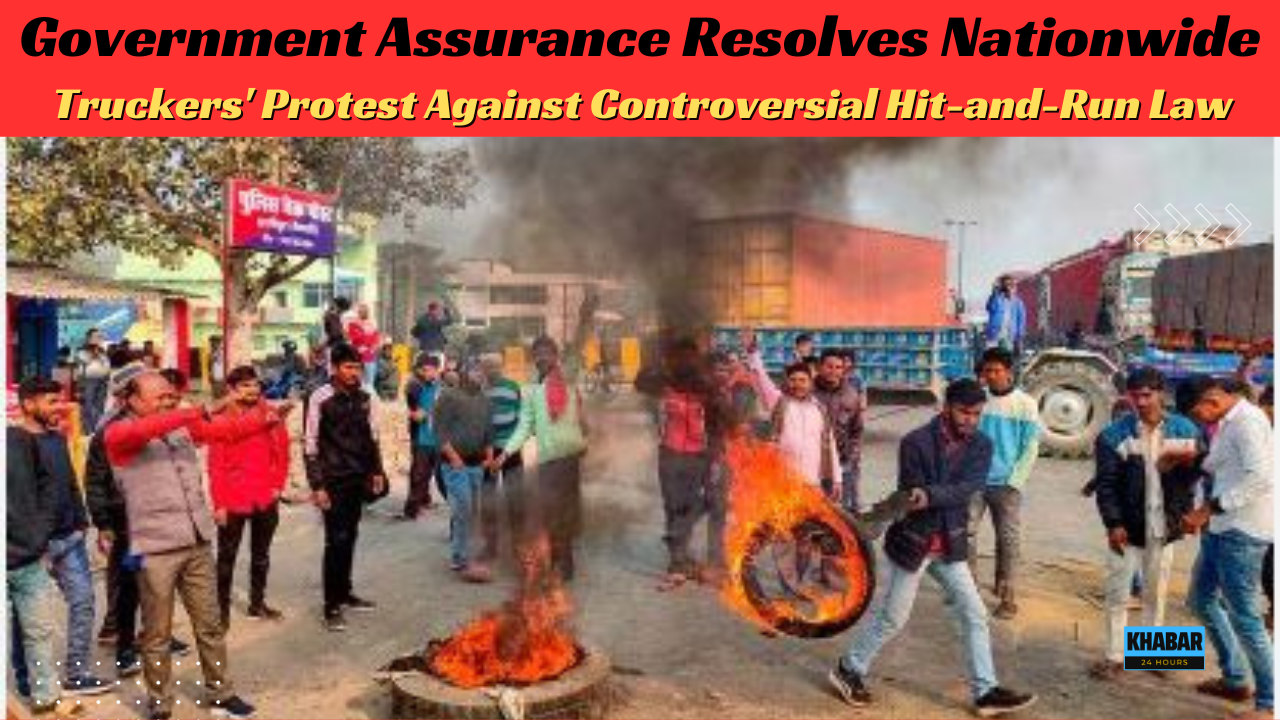The protest was over the Section 106(2) of Bharatiya Nyaya Samhita or BNS — which is set to replace the colonial-era Indian Penal Code — which had provisions for strict penalty in hit-and-run cases.
Introduction: The recent nationwide truckers’ stir, initially sparked by concerns over the implementation of the contentious Bharatiya Nyaya Samhita (BNS) Section 106(2), has been called off following assurances from the government. After extensive discussions, the All-India Motor Transport Congress (AIMTC) decided to end the agitation, highlighting the importance of consulting stakeholders before enforcing the new law.
Government’s Position: Union Home Secretary Ajay Bhalla emphasized that the new rule, BNS 106/2, has not been implemented yet. He stated, “Before implementing Bharatiya Nyaya Samhita 106/2, we will have a discussion with All India Motor Transport Congress representatives, and then only we will take a decision.” This assurance aims to address the concerns raised by the truckers and foster collaborative decision-making.
Confirmation by AIMTC: Bal Malkit, the chairman of AIMTC’s core committee, confirmed that the new laws have not been put into effect. He clarified, “It will be implemented only after consultation with All India Transport Congress.” This resolution marks a positive step forward as both parties agree to engage in meaningful discussions before any enforcement.
Background of the Protest: The primary point of contention was Section 106(2) of Bharatiya Nyaya Samhita, which is set to replace the colonial-era Indian Penal Code. This section proposed stricter penalties in hit-and-run cases, raising concerns among truckers about potential legal ramifications. The threat of an all-India strike had caused concerns about fuel and essential item shortages.
Nationwide Impact: The protests had a widespread impact, spanning across states like Jammu and Kashmir, Bihar, Punjab, Maharashtra, Madhya Pradesh, Himachal Pradesh, and Chhattisgarh. The truckers’ concerns resonated with commercial vehicle operators, including cab drivers, who questioned their ability to afford the steep fines outlined in the new law.
Details of the New Law: Under the proposed law, hit-and-run cases could lead to up to 10 years in jail and a fine of ₹7 lakh, a significant increase from the current penalty of a maximum two-year jail term and a lighter fine. The maximum punishment of 10 years applies when an offender causes death through rash driving and leaves the scene without reporting to the police.
Conclusion: While the resolution brings relief, concerns about the potential misuse of the law, the process of reporting incidents, and the financial burden on commercial vehicle operators remain. Ongoing discussions and collaboration between the government and stakeholders will be crucial in addressing these concerns and ensuring a balanced and effective implementation of the new legislation. Stay tuned for further developments on this important issue.

